Sizes & measurements
Measuring your finger
Your ring should fit your finger comfortably; snug enough so that it will not fall off, but loose enough to slide over your knuckle.
Finger size changes depending on the time of day and the weather. For best results measure your finger size:
- At the end of the day and when your fingers are warm (fingers are smaller in the early morning and when cold).
- Measure finger size 3 to 4 times to eliminate an erroneous reading.
Avoid using string or paper to measure ring size as these materials can stretch or twist, yielding an inaccurate measurement.
Ring sizes in the US
Women’s rings typically range from size 3 to 10. The most commonly purchased women’s ring sizes at Devam range from size 5 to 7. Size 6 is the most popular ring size.

Necklace sizing chart
- 16″ Fits like a Choker
- 18″ Falls at the collarbone
- 20″ Falls few inches below collarbone
- 22” At or above neckline
- 24” Below the neckline
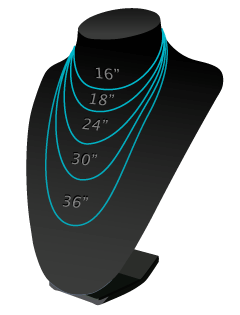

Bracelet sizing chart
Find a bracelet that fits you correctly. Use a tape measure. Wrap the tape measure around the wrist on which you plan to wear your bracelet. Make a note of the number at the point where the tape meets the 0. To ensure the bracelet fits comfortably, add approximately 1.5 – 2.0 cm. You can then add or subtract centimeters according to whether you prefer a loose, exact or tight fit.
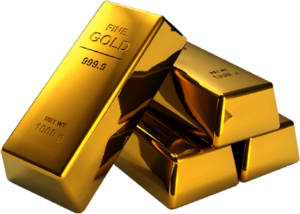
A metallic chemical element with the symbol Au and the atomic number of 47. Gold is the most malleable of all metals. One gram can be hammered into 1 square meter and one ounce can be pounded into 300 square feet. Chemically, it is unaffected by air, moisture and most corrosive reagents. Gold standards have been the most common basis for monetary policies since early history only replaced by flat currency during the 20th century.
Gold has been highly sought after for jewelry making since the beginning of history. In medieval times, gold was believed to be beneficial to one’s health.
It can symbolize power, wealth, strength, happiness, warmth, love, hope, optimism, justice, balance, summer, sun and harvest.

Silver is a metallic element with the chemical symbol Ag and the atomic number 47. Sterling silver is an alloy of 92.5% silver and 7.5% other metals, usually copper. It is often stamped with the numbers 925. In order for something to be considered silver, it must be at least 90% silver and 10% of another metal. This alloy is stamped with 900. Fine silver (99.9% silver) is far too soft for jewelry, but can often be used as a decorative element in silver pieces. It is much less expensive than gold, but used just as frequently in making jewelry. Silver often symbolizes purity, clarity, awareness, focus and persistence. It is also associated with the moon and female energy.
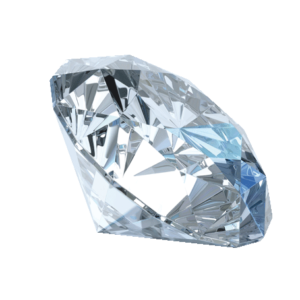
One of the most recognized and treasured of all gemstones, the diamond has universal appeal and significance. Believed to have first appeared in India 4000 – 6000 years ago, the diamond is composed of pure carbon and known to be the hardest substance found in nature. While the most famous diamonds are flawless and colorless, they are very rare. Many artists and designers are now using naturally colored and rustic diamonds in their jewelry for their diverse, earthy and sumptuous color and organic characteristics. They are as distinctive as traditional diamonds, but offer a more individual elegance. The Kimberley Process certification system was formally adopted in 2003 and guards against conflict diamonds entering the legitimate diamond trade industry. Many govenments – including the US – have adopted this policy into national law. DF World Inc. designers adhere to this policy and use only conflict-free diamonds in their jewelry. Need more info about diamond quality factors clik here![]()
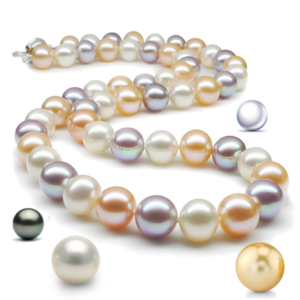
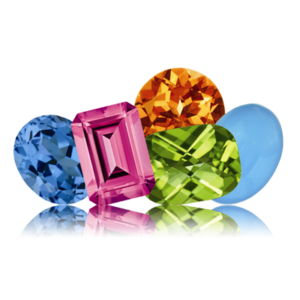
The style, mood and presence from a single piece of jewelry depends on the composition created by its artist. The arrangement of color, shape and texture are elements each artist considers when they design their jewelry and many use gemstones to capture and illuminate their signature style. Precious stones include diamonds, rubies, sapphires and emeralds. This designation reflects their rarity as well as their quality – they are transluscent with fine color in their purest forms. Their hardness is 8 – 10 on the Mohs scale. All other are semiprecious gemstones.

Considered nature’s own gemstone, pearls are produced within the soft tissue of a living shelled mollusk after being implanted (or ‘cultured’) with a nucleated bead. After the bead is placed within the mollusk, the nacre forms in concentric layers around it thus producing a pearl. Size, shape, color, quality of surface, orient and luster are the categories in which a pearl is graded.
Black rhodium (Rose & Yellow Gold) is a plating that may wear off over time, especially in the presence of items containing sulfur such as leather, rubber, chlorine, and perspiration as well as lotions, perfumes and oils. It is not advisable to polish or wipe your black rhodium or rose (yellow) gold silver jewelry. Wipe gently only if needed and never use anything but a clean, nub-free cotton cloth. AVOID silver polish or dip style cleaning products which will remove the plating. If you would like to re-plate the jewelry, please
